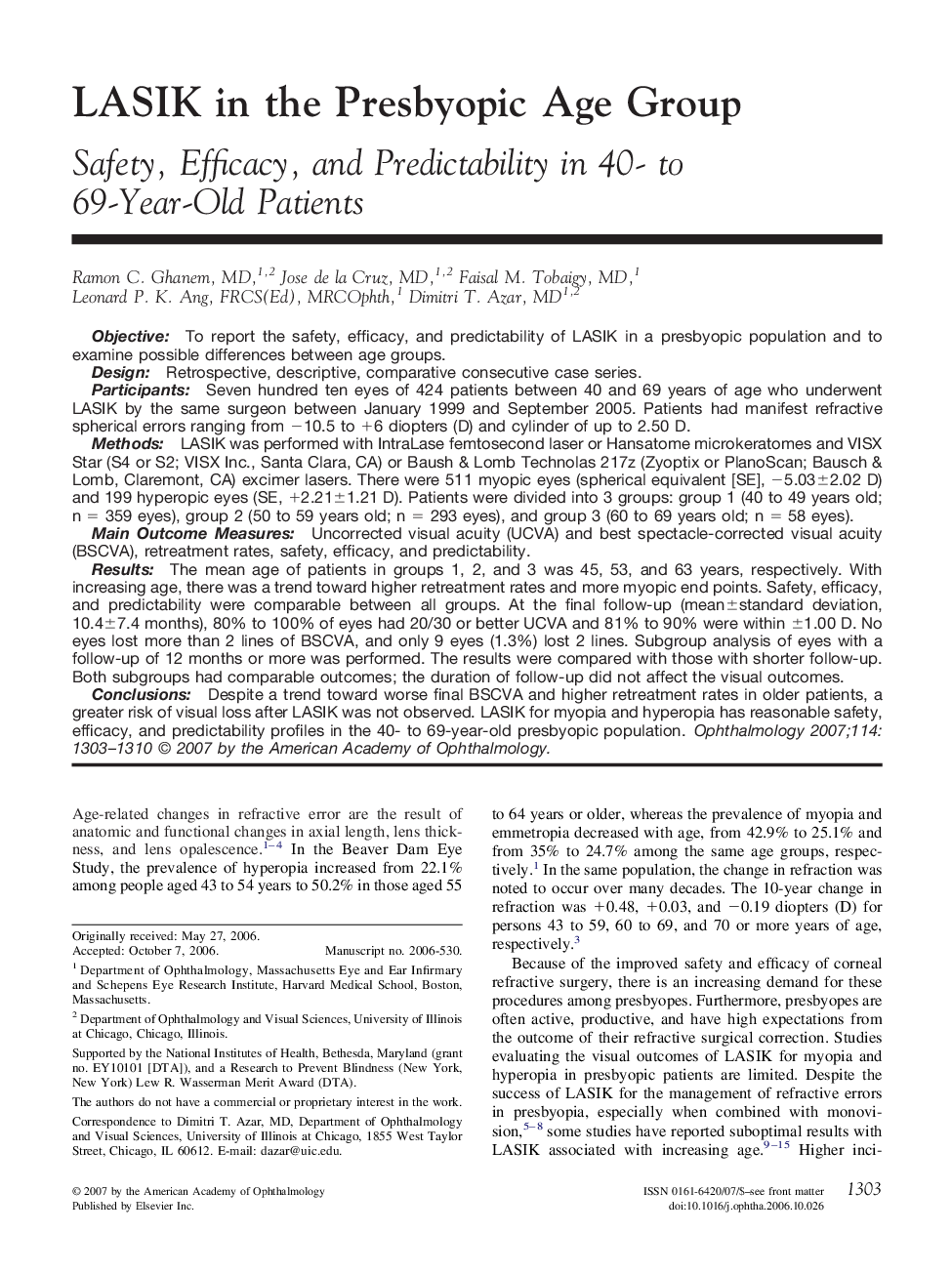| کد مقاله | کد نشریه | سال انتشار | مقاله انگلیسی | نسخه تمام متن |
|---|---|---|---|---|
| 4030190 | 1262520 | 2007 | 8 صفحه PDF | دانلود رایگان |

ObjectiveTo report the safety, efficacy, and predictability of LASIK in a presbyopic population and to examine possible differences between age groups.DesignRetrospective, descriptive, comparative consecutive case series.ParticipantsSeven hundred ten eyes of 424 patients between 40 and 69 years of age who underwent LASIK by the same surgeon between January 1999 and September 2005. Patients had manifest refractive spherical errors ranging from −10.5 to +6 diopters (D) and cylinder of up to 2.50 D.MethodsLASIK was performed with IntraLase femtosecond laser or Hansatome microkeratomes and VISX Star (S4 or S2; VISX Inc., Santa Clara, CA) or Baush & Lomb Technolas 217z (Zyoptix or PlanoScan; Bausch & Lomb, Claremont, CA) excimer lasers. There were 511 myopic eyes (spherical equivalent [SE], −5.03±2.02 D) and 199 hyperopic eyes (SE, +2.21±1.21 D). Patients were divided into 3 groups: group 1 (40 to 49 years old; n = 359 eyes), group 2 (50 to 59 years old; n = 293 eyes), and group 3 (60 to 69 years old; n = 58 eyes).Main Outcome MeasuresUncorrected visual acuity (UCVA) and best spectacle-corrected visual acuity (BSCVA), retreatment rates, safety, efficacy, and predictability.ResultsThe mean age of patients in groups 1, 2, and 3 was 45, 53, and 63 years, respectively. With increasing age, there was a trend toward higher retreatment rates and more myopic end points. Safety, efficacy, and predictability were comparable between all groups. At the final follow-up (mean±standard deviation, 10.4±7.4 months), 80% to 100% of eyes had 20/30 or better UCVA and 81% to 90% were within ±1.00 D. No eyes lost more than 2 lines of BSCVA, and only 9 eyes (1.3%) lost 2 lines. Subgroup analysis of eyes with a follow-up of 12 months or more was performed. The results were compared with those with shorter follow-up. Both subgroups had comparable outcomes; the duration of follow-up did not affect the visual outcomes.ConclusionsDespite a trend toward worse final BSCVA and higher retreatment rates in older patients, a greater risk of visual loss after LASIK was not observed. LASIK for myopia and hyperopia has reasonable safety, efficacy, and predictability profiles in the 40- to 69-year-old presbyopic population.
Journal: Ophthalmology - Volume 114, Issue 7, July 2007, Pages 1303–1310